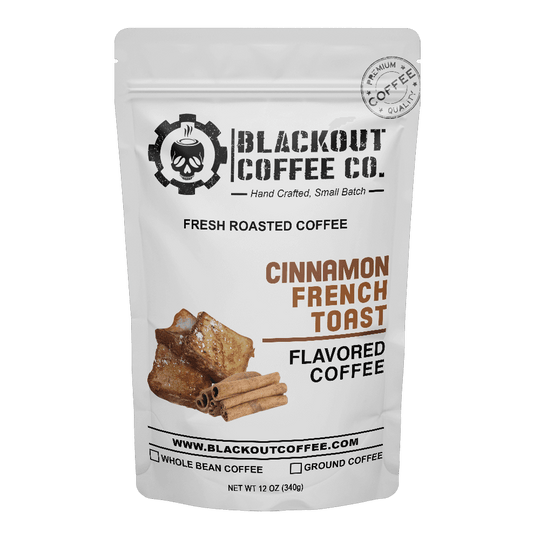French Toast Coffee: The Cozy Beverage That’s Winning Mornings

Imagine the warmth of maple syrup, the comforting spice of cinnamon, and the rich aroma of freshly brewed coffee now blend them into one cup. That’s the magic of French Toast Coffee, a beverage that captures the essence of a homestyle breakfast in every sip. From cozy cafés to kitchen counters, this flavor fusion is fast becoming a go-to for those who crave both familiarity and innovation in their coffee routine.
What Is French Toast Coffee?
French Toast Coffee isn’t just a flavored latte, it’s a thoughtfully crafted combination of flavor notes inspired by the classic breakfast favorite. It typically blends medium or dark roast coffee with ingredients or syrups that evoke cinnamon, vanilla, brown sugar, and maple.
Variations can include:
Maple syrup-infused espresso
Steamed milk with a dash of cinnamon
French toast-flavored syrups
Toppings like whipped cream and toasted sugar crumbs
The result is a sweet, aromatic cup with a balanced richness that’s ideal for cold mornings or indulgent brunches.
How It All Started
The concept of flavored coffee isn’t new, but French Toast Coffee has gained rapid popularity in the last few years thanks to social media, seasonal café menus, and the rise of brunch culture. Coffee lovers looking for comfort without the heaviness of a full breakfast found this flavor to be a perfect bridge.
Many independent roasters and cafés began experimenting with breakfast-inspired infusions, and French Toast Coffee stood out for its nostalgic appeal. Its growing fan base includes everyone from college students to seasoned espresso enthusiasts.
Flavor Profile of French Toast Coffee
What makes this coffee stand out is its multi-layered flavor. Each sip offers a blend of:
Cinnamon Spice: Warm and slightly sweet, enhancing the natural notes of the coffee.
Maple or Brown Sugar: Adds depth and brings out caramel-like tones.
Vanilla: Smooths the overall flavor and softens bitterness.
Toasty Finish: A hint of nuttiness or bread-like warmth that mimics grilled French toast.
These flavors come together in a harmonious blend that pairs well with both dairy and non-dairy creamers, especially oat and almond milk.
How to Make French Toast Coffee at Home
Crafting this comfort-in-a-cup at home is easy and customizable. Here’s a simple recipe for a cozy mug of French Toast Coffee:
Ingredients:
1 cup of brewed coffee (medium or dark roast)
1/2 teaspoon ground cinnamon
1 tablespoon maple syrup
1/4 teaspoon vanilla extract
1/2 cup milk or milk alternative (optional)
Whipped cream and cinnamon sugar (optional garnish)
Instructions:
Brew a fresh cup of coffee.
In a small saucepan, warm the milk, cinnamon, vanilla, and maple syrup together until steaming.
Froth the mixture if desired, then pour over the coffee.
Top with whipped cream and a sprinkle of cinnamon sugar for a café-style finish.
This basic version can be elevated with flavored syrups, espresso shots, or even French toast-flavored coffee beans.
Where to Find French Toast Coffee
More cafés across the country are adding French Toast Coffee to their menus, especially during fall and winter. You’ll often see it offered as a seasonal special, right alongside pumpkin spice and peppermint mocha.
Some well-known locations include:
Boutique coffee shops with experimental menus
Farmers markets with artisanal brews
Mobile espresso bars and brunch pop-ups
Gourmet roasters selling French toast-flavored beans
Several brands also offer French Toast Coffee as pre-ground or whole-bean blends, making it easy to brew at home.
Perfect Pairings for French Toast Coffee
This coffee doesn’t need much to shine, but pairing it with complementary treats enhances the experience. Try it with:
Buttered croissants
Banana walnut muffins
Maple scones
Cinnamon rolls
Vegan breakfast cookies
It’s also a great match for savory dishes like bacon egg sandwiches, balancing the salt with sweetness.
Why People Love French Toast Coffee
The appeal of French Toast Coffee lies in its balance of familiarity and fun. It taps into childhood memories of weekend breakfasts while satisfying adult taste for complexity. It’s also:
Versatile: Can be enjoyed hot, iced, or even blended.
Comforting: Ideal for slow mornings or relaxing afternoons.
Instagram-worthy: Aesthetically pleasing with whipped toppings and cinnamon swirls.
Affordable luxury: A small indulgence that feels like a treat without breaking the bank.
Its rise in popularity is more than a trend—it reflects a broader desire for cozy, feel-good flavors that bring a bit of joy to the daily grind.
